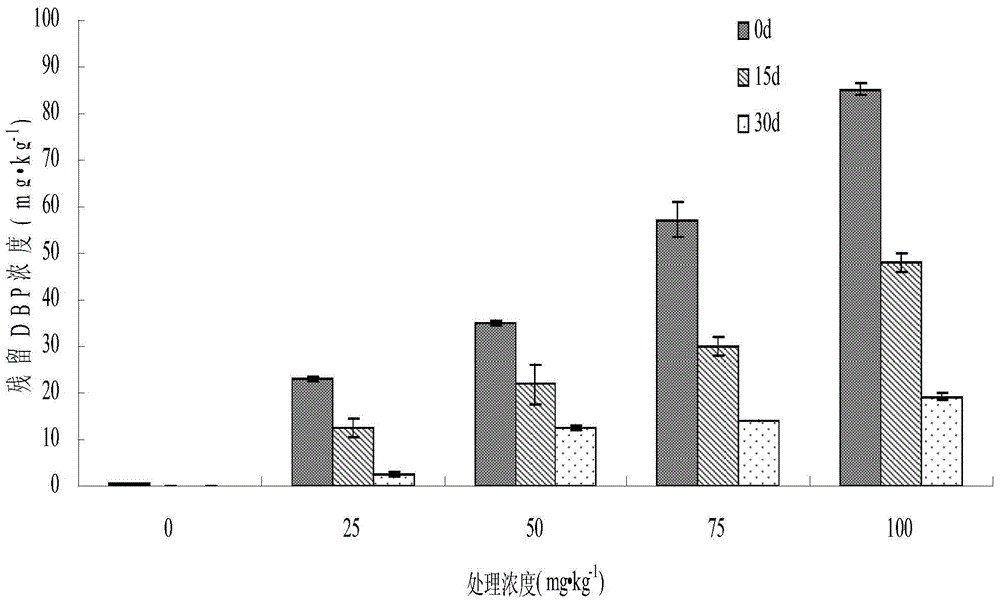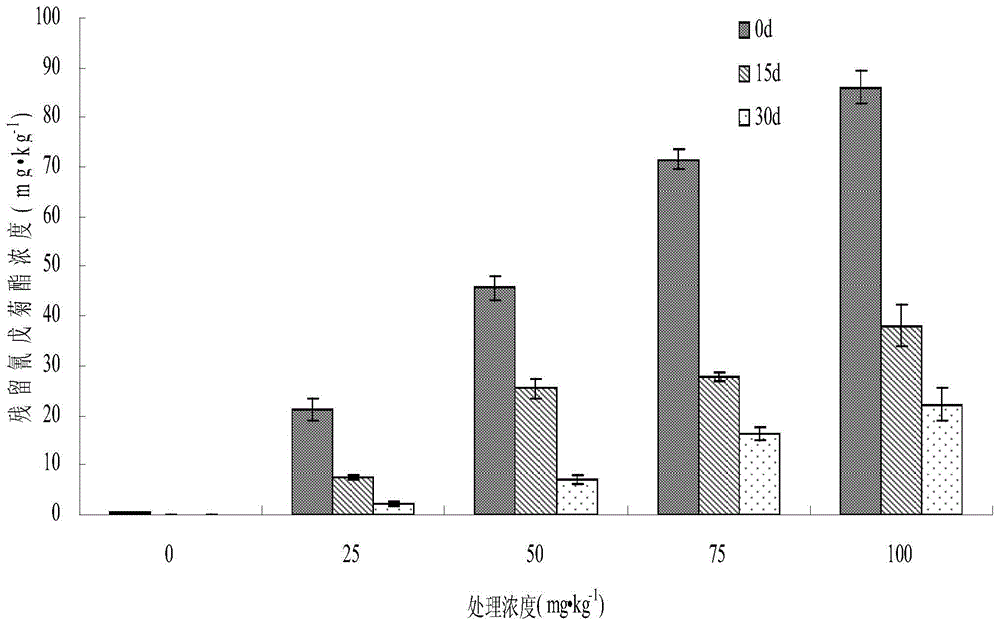A fungus capable of simultaneously degrading phthalates and pesticides and its application
A technology of phthalates and pesticides, applied in the field of fungi that degrade phthalates and pesticides at the same time, to achieve a good degradation effect
- Summary
- Abstract
- Description
- Claims
- Application Information
AI Technical Summary
Problems solved by technology
Method used
Image
Examples
Embodiment 1
[0019] Example 1 Screening and isolation of Geotrichum sp. DY4 and its degradation performance to PAEs and pesticides
[0020] (1) Screening and isolation of Geotrichum sp. DY4
[0021] Soil samples were taken from the plow layer (0-20 cm) of a farmland polluted by PAEs and pesticides in a certain place in Guangdong Province. Weigh 10g of the soil sample, put it into a 250mL Erlenmeyer flask with 90mL of deionized water and 4-5 glass beads, vibrate at 28°C and 180rpm for 30min, and let it stand for 30min. Get 10mL of supernatant, add 140mL of inorganic salt medium containing composite PAEs and pesticides to the supernatant [the composition of inorganic salt medium is as follows: (NH 4 ) 2 SO 4 1.0g / L, KH 2 PO 4 1.0g / L, MgSO 4 ·7H 2 O0.2g / L, CaCl 2 0.1g / L, FeCl 3 0.01g / L, adjust the pH value to 7.0, sterilize by high-pressure steam at 121°C for 20min, and carry out gradient acclimatization three times in the same below. The concentrations of 3 PAEs (DMP, DBP and DEHP,...
Embodiment 2
[0045] Example 2: Effects of growth factors on the degradation effect of Geotrichum sp. DY4
[0046] Select the external carbon source (glucose), the concentration of organic pollutants (DBP and fenvalerate) and pH as the influencing factors, and use an orthogonal design (as shown in Table 3) to optimize the degradation conditions of DBP and fenvalerate. Inorganic salt medium was used, 100mL per bottle, and the concentration values of the two organic pollutants were shown in Table 3. Refer to Example 1 for the expanded culture of bacterial strains. By adding a concentration of 1mol L -1 The NaOH solution was used to adjust the pH value, cultured at 28°C / 120rpm for 7 days, and an uninoculated inorganic salt medium was used as a control. Determine the content of organic matter and the pH value of the bacterial solution, calculate the degradation rate and find out the optimal degradation conditions.
[0047] Using the range analysis method, the results in Tables 4 to 7 show ...
Embodiment 3
[0061] Example 3: Degradation effect of Geotrichum sp. DY4 on DBP and fenvalerate in sterilized soil
[0062] The clean soil used in the test was taken from the 0-20 cm plow layer of the rice test field of South China Agricultural University. The soil indicators are as follows: 2.20% organic matter, 0.10% total nitrogen, and 130 mg kg -1 , Available phosphorus 114mg·kg -1 , available potassium 284mg·kg -1 , the pH value is 6.08, which is medium loam. After being air-dried, ground by a soil grinder, and passed through a 100-mesh sieve, the base soil was obtained. Set up 5 concentration gradients for DBP and fenvalerate, 0, 25, 50, 75, 100 mg·kg -1 , added to the base soil to obtain artificially contaminated soil. 40g of each artificially contaminated soil sample was set up in 3 parallels, put into a clean glass petri dish, and all samples were sterilized twice a day by high-pressure steam at 121°C for 20 minutes each time. After the strains were expanded and cultured with ...
PUM
 Login to View More
Login to View More Abstract
Description
Claims
Application Information
 Login to View More
Login to View More - R&D
- Intellectual Property
- Life Sciences
- Materials
- Tech Scout
- Unparalleled Data Quality
- Higher Quality Content
- 60% Fewer Hallucinations
Browse by: Latest US Patents, China's latest patents, Technical Efficacy Thesaurus, Application Domain, Technology Topic, Popular Technical Reports.
© 2025 PatSnap. All rights reserved.Legal|Privacy policy|Modern Slavery Act Transparency Statement|Sitemap|About US| Contact US: help@patsnap.com



